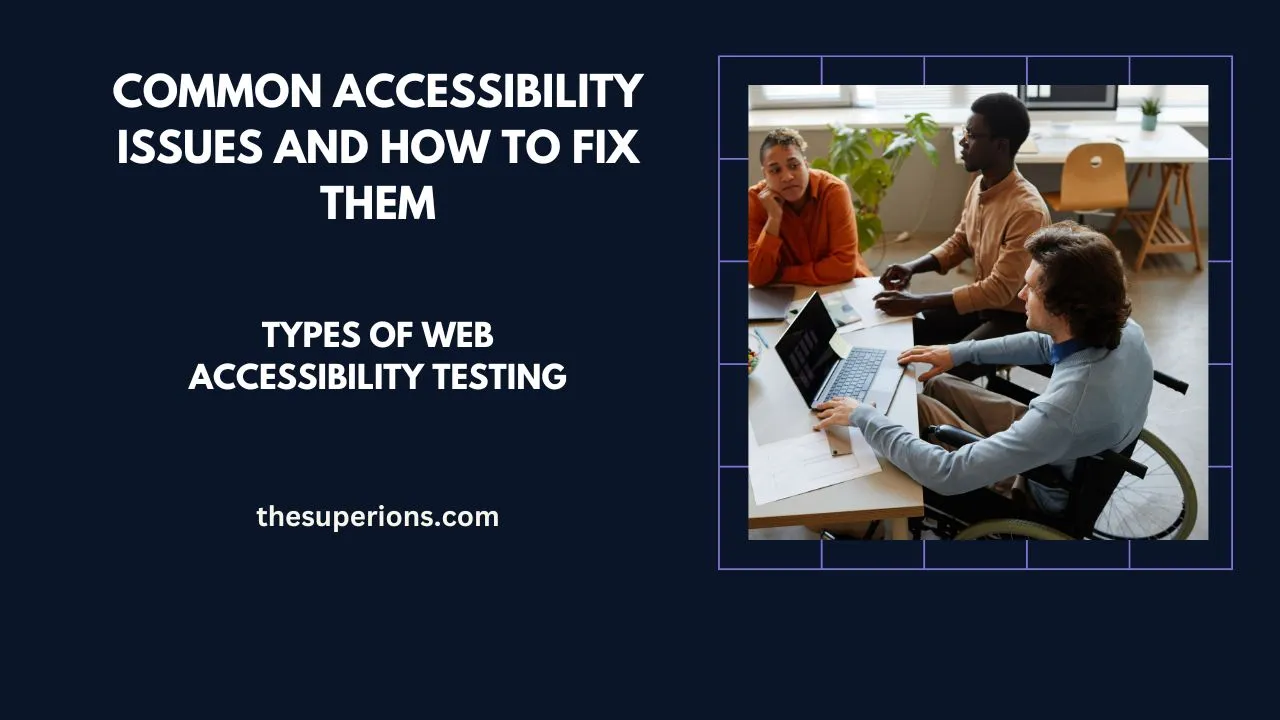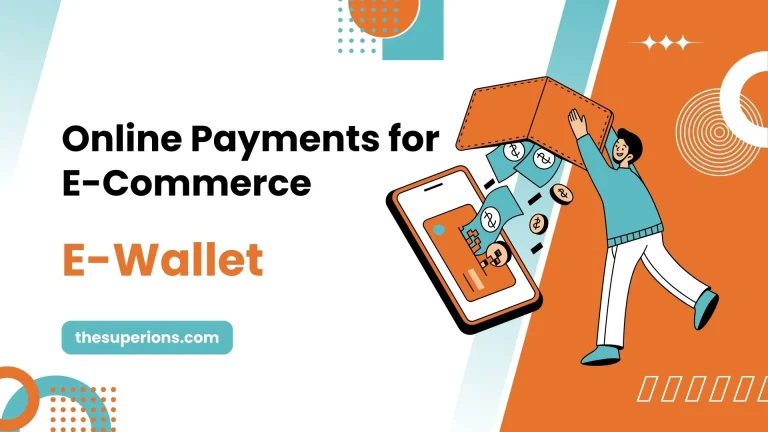Common Accessibility Issues and How to Fix Them
In the current virtual scenario, accessibility is not just a desire but a necessity. Ensuring that everyone, regardless of their skills, can enter and interact with virtual content is essential for developing inclusive online studies. But, notwithstanding advancements in technology, common accessibility issues continue to pose obstacles for users with disabilities. From insufficient alt text on photos to complicated forms and inaccessible media, those challenges prevent identical people from accessing information and services. Lots of those issues may be addressed through proactive measures and adherence to accessibility recommendations.

This article seeks to shed light on a number of the most common everyday accessibility testing Chrome, along with problems encountered on digital platforms, and offer realistic answers to mitigate them. By providing information about these emerging situations and enforcing the recommendations, corporations can take substantial strides toward fostering a more inclusive online environment for more effective and easy user accessibility. From optimizing website design to ensuring report accessibility, every effort contributes to breaking down boundaries and ensuring everyone can participate in the digital world.
People Also Read?
What is Accessibility?
Accessibility refers to implementing virtual and bodily environments, merchandise, and offerings in a manner that guarantees they may be usable and understandable by human beings of all competencies, such as those with disabilities. Within virtual technology, accessibility usually refers to creating websites, packages, documents, and other virtual content material accessible to people with disabilities, including visual, auditory, motor, or cognitive impairments.
Accessibility aims to eliminate boundaries and offer all users identical access to information, conversation, and capability. It includes enforcing talents and design factors that accommodate various desires, encompassing display readers for visually impaired customers, keyboard navigation for motor impairments, captions for deaf or difficult-of-hearing customers, and clean language for users with cognitive disabilities.
In essence, accessibility ensures that everybody, irrespective of their abilities, can perceive, apprehend, navigate, and interact with digital content and offerings effectively. It promotes inclusivity, variety, and identical possibilities for participation within the virtual world. Through prioritizing accessibility in layout and development techniques, organizations can create more inclusive and alluring environments that benefit all users.
Types of Web Accessibility Testing
1. Manual Web Accessibility Test:
The simplest and most fundamental manual method for checking accessibility is keyboard accessibility. It is accomplished by pressing the ‘tab’ key on the keyboard. Ideally, every link will center on each ‘tab’ hit, preparing the user to traverse the device. Some assistive technologies include screen readers (NVDA, JAWS, VoiceOver, Talkback, etc.). Those screen readers will interpret what is on the system, allowing those with vision problems to use and recognize the internet more effectively.
2. Automated Web Accessibility Testing:
The developers can automate the website’s accessibility testing using several solutions, including browser plug-ins (Axe for Chrome and Firefox, Web Accessibility Toolbar, and so on), automated APIs (Axe, pa11y, and so on), and additional programs such as Accessibility Inspector, JAWS Inspect, and the Colour Contrast Analyzer.
Principles of Accessibility
The four key accessibility concepts are described in the Web Content Accessibility Guidelines (WCAG), which offer worldwide identified requirements for internet accessibility. These principles are the foundation for developing available virtual content material and stories. They are as follows:

1. Perceivable
Information and user interface additives must be provided so customers can understand them. It consists of providing text alternatives for non-textual content material (including pix), ensuring content is distinguishable and legible, and imparting options for time-based total media (together with captions for videos).
2. Operable
User interface additives and navigation need to be operable. Customers should be able to navigate and engage with content using diverse input methods, which include keyboard navigation and assistive technology. Interactive elements must be available and valuable, and users must have enough time to finish their responsibilities.
3. Understandable
The content and operation of the user interface ought to be understandable. It involves making content material clear and easy to understand, ensuring consistency and predictability in design and capability, and providing clean commands and feedback to customers.
4. Robust
Content should be robust enough to be interpreted reliably by an extensive marketing type, including assistive technology. It means using technology and coding practices well suited to one-of-a-kind gadgets and structures, ensuring content stays handy as technologies evolve.
By adhering to these four ideas of accessibility, developers and researchers can create virtual experiences that are inclusive and usable by using all individuals, irrespective of their competencies.
Common Accessibility Issues and their Solutions
Commonplace accessibility problems encompass various aspects of virtual content and user experience that pose limitations to individuals with disabilities. Some customary issues include:
- Inappropriate alternative text for images: Alt text for pictures is one of the most prevalent accessibility difficulties in web design. According to WebAIM, 31.3 percent of home page banners lacked alternative text. Other earlier accessibility studies from 2006 to 2013 cite this setback several times, demonstrating that it is a well-known issue that has not been resolved. It presents a significant difficulty in terms of online accessibility.
- The poor contrast text: The site’s inadequate contrast makes it difficult for consumers to recognize the edges and shapes of various components. However, it was discovered on 86.4 percent of home pages in WEB Aim’s most recent research.
- Heading Hierarchy: Users with impairments need help to read whole web pages. They utilize AT (Assistive Technology) to navigate the website. A screen reader is one type of assistive technology that people with visual impairments commonly use to access websites. The vast majority of screen reader users utilize headers to browse any page. As a result, maintaining a logical heading hierarchy (H1>H6) is critical to ensuring that people can easily navigate your site.
- Poorly Structured Form Labels: When form input fields are not labeled, assistive technology users may need help to grasp the control’s purpose. Screen reader users need help understanding what you are attempting to collect. They may need help determining what information should be submitted to a particular form area.
- Use Non-descriptive Links: When including links in any content, use wording that accurately conveys where the link might go. Assistive technology may quickly direct screen readers to select web page URLs. A sentence like “Read More” or “Click here” does not mean anything to a screen reader user.
- Lack of Keyboard Accessibility and Navigation: Visually impaired website visitors and users with mobility limitations may struggle to access any website using a mouse or touchpad. Accessing information via assistive technology such as voice-activated instructions or a sip-and-puff gadget may be significantly easier.
- Embedding inaccessible documents: Accessibility difficulties apply to things such as papers posted on your website. PDFs and other digital goods (such as Word documents and PowerPoint presentations) should be accessible to impaired individuals. Some of these tools have an accessibility checker to assist users.
- Add subtitles and captions to videos: One of the most prominent accessibility issues in recent decades has been using subtitles and captions for video footage. Content authors have realized that removing them causes your website to stand out from the crowd (not in a good way). Deaf persons require some type of caption to access audiovisual material.
Addressing such common accessibility issues is critical to building an inclusive digital environment where all users can access and interact with material equally.
How Do We Run The Accessibility Test on the Cloud?
To leverage the complete capabilities of accessibility testing on various browsers and OS combinations, you can use a cloud-based platform like LambdaTest. It is an AI-powered test orchestration and execution platform that lets you run manual and automated tests at scale with over 3000+ real devices, browsers, and OS combinations.
It enables developers and testers to perform cross-browser testing that enables them to perform move-browser and pass-device testing of web programs. At the same time that LambdaTest broadly focuses on functional testing aspects, it additionally provides capabilities for conducting accessibility assessments, allowing customers to pick out and address accessibility troubles in their web initiatives.
Here is how LambdaTest can help in the context of accessibility issues and how to restore them:
- Register: Log in to your LambdaTest account or sign up if you did so still need to do so.
- Select test configuration: select the desired configuration, including the browser, running device, and device combination you need to test on. Open the desired website or web application, and enter the website URL or internet software you want to test for accessibility.
- Allow accessibility testing: on the LambdaTest platform, there ought to be an option to allow accessibility testing. Depending on the testing interface, this selection is probably labeled differently; however, it is commonly placed in the settings or configurations phase.
- Run the test: once accessibility checking out is enabled, start the test session. LambdaTest will open the selected browser on the tool and load the required URL.
- Analyse accessibility results: LambdaTest will perform accessibility checks at the internet site primarily based on WCAG tips. It will pick out accessibility issues and provide a document highlighting any violations determined.
- Evaluate the problems that occurred: Evaluate the accessibility file furnished by LambdaTest. It is going to element each accessibility violation together with hints for remediation. Cope with the identified problems to enhance the accessibility of your website or web software.
- Repeat testing: Make essential fixes and re-run the accessibility checks to ensure each problem has been resolved.
By following these steps, you can effectively run a test for accessibility on LambdaTest and discover and address accessibility troubles for your internet tasks.
Benefits of Accessibility Testing
Accessibility testing is essential in ensuring that virtual services and products are inclusive, usable, and compliant with accessibility requirements. By figuring out and addressing obstacles that can restrict the right of entry for human beings with disabilities, accessibility testing fosters inclusivity, expands target market reach, and enhances what human beings experience.
Furthermore, it allows organizations to conform to criminal necessities and pointers, mitigating risks and charges related to non-compliance. With the aid of prioritizing accessibility, companies no longer only demonstrate their commitment to range and inclusion but also advantages from an aggressive part of the marketplace. Primary accessibility is critical for growing digital merchandise available to all clients, irrespective of their talents, hence selling equality and improving user satisfaction.
People Also Read?
Conclusion
Accessibility should never be an afterthought but a vital component of the development process. Most accessibility problems fall into six categories, and addressing them will make our websites more accessible to everyone. Accessibility changes should be simple and need only basic HTML and CSS expertise. If we prioritize accessibility, we may reach a larger audience while ensuring our code is solid and follows standards. Accessibility not only enables everyone to utilize websites, but it also strengthens the foundation of our programming.
By implementing solutions that include providing descriptive alt textual content for images, making sure there are clear heading structures, and allowing keyboard navigation, companies can improve accessibility and remove barriers to access. Furthermore, by embracing accessibility as a fundamental aspect of design and development strategies, groups can beautify consumer pride, follow regulations, and foster a more inclusive online environment by continuous testing, iteration, and development.





